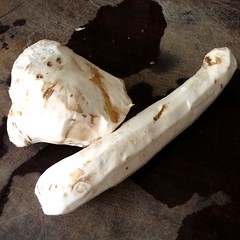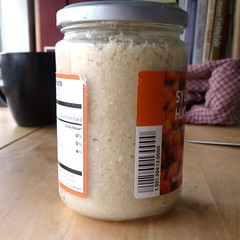



Makes about 2 cups
In a food processor fitted with the metal chopping blade, combine all ingredients. Process until the horseradish is finely ground. In a well-ventilated area, pack horseradish into glass jars that can be tightly sealed. Refrigerate for up to 6 months.
If horseradish darkens and develops a bitter taste, throw it out.